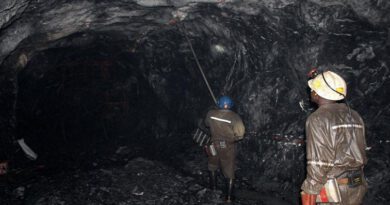Eskom CEO: tariff hike needed to cover costs
Eskom has been unable to rein in its R463.7 billion (up from R454.2 billion in September 2019) debt burden, despite increased tariffs and continued government support.
On Monday, Eskom CFO Calib Cassim told reporters during its interim results presentation that the power utility spends R2 billion each week on debt-service commitments.
Eskom has blamed a myriad of issues for its escalating debt, including funds owed by municipalities and customers now standing at R32.9 billion, up from R25.1 billion in September 2019. It says 48 municipalities in the country accounted for more than R100 million owed, each, by September 30, 2020.
It adds that the minimal tariff increases granted to it by the National Energy Regulator are insufficient to cover its costs.
Eskom CEO André de Ruyter said on Monday that the power utility requires a gradual 25% tariff increase to adequately cover its costs.
For the six months to September 2020, Eskom’s sales volumes fell 10.3% to R108.7 billion, as a result of the Covid-19 national lockdown that came into effect in March. This is despite a 8.76% tariff increase granted to it by Nersa over the period.
Demand is unlikely to recover to pre-Covid-19 levels due to the economic recession. Sales are expected to be 15.7 TWh lower than the prior-year and are likely to stagnate at 190 TWh for the next few years, Eskom says.
De Ruyter said implementing the required “cost-effective” tariffs would not result in exorbitantly high electricity prices because measured against other developing and developed markets, South Africa’s electricity prices would remain competitive. South Africa would still be in the lower third of average global tariffs, he said.
“If one converts the South African electricity tariffs to US dollars…the real cost of electricity in South Africa measured in US dollars since 2011 has not kept up with US inflation…
“In US dollar-based terms the cost of electricity has declined over the past decade.”
He added that this conversion is important because South Africa is a net exporter of commodities to US-dollar dominated markets.
As at September 30, Eskom had secured funding of R19.6 billion, or 48% of the funding requirements of R40.7 billion, for the 2021 financial year.
Government has provided a further R6 billion in support, with the remainder from the R56 billion committed by government expected by year-end. In the absence of tariff increases, however, Eskom says the government support will assist in servicing debt and improving liquidity but is inadequate to reduce “the principal debt and therefore, will not ensure Eskom’s long-term financial viability”
Eskom recorded a net profit, after tax, of R83 million, while navigating a “very challenging” operating environment.
“Despite having achieved 48% of our funding requirements during the period under review, our access to funding in both domestic and foreign markets remains constrained owing to low investor confidence as a result of poor financial performance, saturated borrowing capacity and the recent rating downgrades,” says Cassim.
“These factors have a direct effect on market appetite and Eskom’s future cost of borrowing and may hinder execution of our borrowing programme. Eskom will however continue to explore all avenues.”
Cassim concluded: “Cost savings alone will not solve Eskom’s financial position. The price of electricity must migrate to prudent and efficient cost reflectivity whilst embedding the user-pay principle.”
Read:
ABB to repay Eskom R1.56bn after probe
Eskom to reduce power cuts from Sunday
Source: moneyweb.co.za


